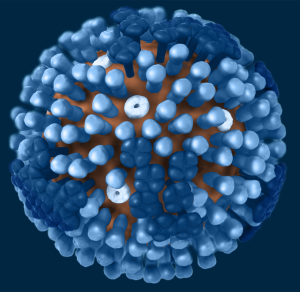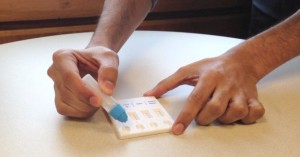That disease control model is being turned on its head by projects like Boston Children’s Hospital’s HealthMap, which scours the web for information related to disease outbreaks. HealthMap’s Flu Near You goes a step further by encouraging people to report their own flu-related symptoms and help track flu emergence and spread.
To date, though, efforts like these have been limited to the digital sphere—part of the growing field of digital epidemiology. They don’t rely on blood, spit and mucus to get their data—it’s all in bits and based solely on symptoms.
But even that is changing, thanks to a new Flu Near You initiative called GoViral. GoViral brings everyone directly into the flu surveillance process by allowing them to not just report how they’re feeling, but to test themselves for flu at home and submit their results.
It works like this: Participants sign up on the GoViral website (which also registers them for Flu Near You). They then receive a kit in the mail containing three tests: a rapid at-home flu test, a mail-in saliva collection kit and a mail-in nasal swab kit.
“No one has ever tried to map out these 20 viruses like this before. This will help us and public health agencies get a better sense of who gets what, and when and where.”
“The rapid test is kind of like a pregnancy test: you use a nasal swab to get the sample and it will let you know if you have one of two flu strains: adenovirus or respiratory syncytial virus,” says Rumi Chunara, PhD, who heads up the GoViral effort. “The mail-in kits let us do more detailed lab analysis for up to 20 viruses.”
When a participant feels something coming on, she clicks a link on the GoViral website to notify them that she wants to submit a sample. After watching three simple video tutorials—one for each kit—she carries out the tests, confirms her symptoms, enters her results from the home test on the website and drops the postage-paid mail-in kits in the mail.
Once the lab results on the mail-in samples are complete, the GoViral team reports them back to her. All at no charge.
From self-reporting to self-testing
Going from crowdsourcing symptoms to crowdsourcing tests has obvious advantages for researchers.“The issue with user reports is that you can’t really tell what people have based just on their symptoms,” Chunara says. “We’re interested in bridging between what people report and what they have by adding real user sampling to our crowdsourced data.”
Chunara’s quick to distinguish the project from 23andMe, whose home genomics test kit was recently pulled from the market.
“Part of the problem with 23andMe is that the FDA questioned the validity of their tests,” she explains. “We’re using a clinically validated test, and we’re explicitly using the data for research purposes.”
What does Chunara hope to learn over the three-year course of the project?
“No one has ever tried to map out these 20 viruses like this before,” she says. “This will help us and public health agencies get a better sense of who gets what, and when and where. We also plan to collect information at the end of the season on how participants used the information from the tests and the site and whether it had any utility for them.”
See what WBUR’s CommonHealth had to say about GoViral. Interested in participating? Sign up here.








